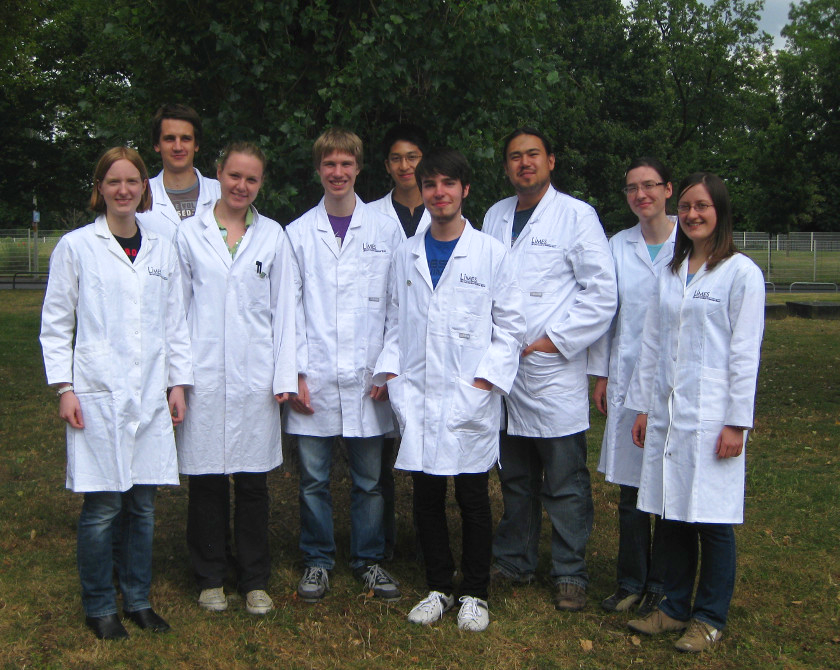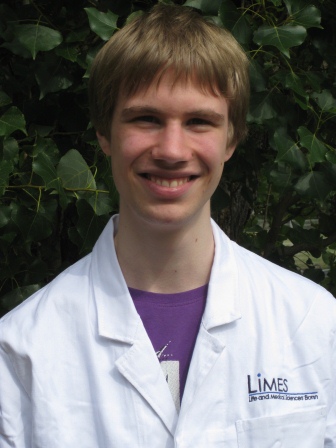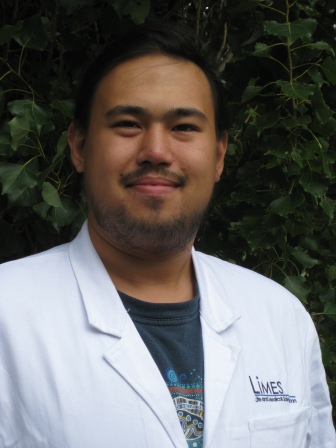Team:Bonn/Team
From 2012.igem.org
(→Where we're from) |
(→The team) |
||
| (6 intermediate revisions not shown) | |||
| Line 5: | Line 5: | ||
!align="center"|[[Team:Bonn/Team|<span style="color:#005186;">Team]] | !align="center"|[[Team:Bonn/Team|<span style="color:#005186;">Team]] | ||
!align="center"|[[Team:Bonn/Project|<span style="color:#4f8dde;">Project]] | !align="center"|[[Team:Bonn/Project|<span style="color:#4f8dde;">Project]] | ||
| - | !align="center"|[[Team:Bonn/Activities|<span style="color:#4f8dde;">Activities]] | + | !align="center"|[[Team:Bonn/Activities|<span style="color:#4f8dde;">Other Activities]] |
!align="center"|[[Team:Bonn/Parts|<span style="color:#4f8dde;">Parts Submitted to the Registry]] | !align="center"|[[Team:Bonn/Parts|<span style="color:#4f8dde;">Parts Submitted to the Registry]] | ||
!align="center"|[[Team:Bonn/Notebook|<span style="color:#4f8dde;">Notebook]] | !align="center"|[[Team:Bonn/Notebook|<span style="color:#4f8dde;">Notebook]] | ||
| Line 16: | Line 16: | ||
|} | |} | ||
| - | == The Team == | + | == '''The Team''' == |
[[Image:Bonn_team.png|700px|center]] | [[Image:Bonn_team.png|700px|center]] | ||
| Line 41: | Line 41: | ||
'''Advisors:''' | '''Advisors:''' | ||
| + | *'''Katia Schöler''' | ||
*'''Silvana Haßel''' | *'''Silvana Haßel''' | ||
*'''Anna Magdalena Hall''' | *'''Anna Magdalena Hall''' | ||
| Line 80: | Line 81: | ||
== '''What we did''' == | == '''What we did''' == | ||
| - | Our team was formed in October 2011 as the first | + | Our team was formed in October 2011 as the first team from the University of Bonn. |
In May 2012 we began to work in the lab. Also take a look at our [http://igem12.uni-bonn.de website at the University of Bonn] | In May 2012 we began to work in the lab. Also take a look at our [http://igem12.uni-bonn.de website at the University of Bonn] | ||
== '''Where we're from''' == | == '''Where we're from''' == | ||
| + | The city of Bonn is nestled in the mouth of the middle rhine gorge in the heart of western Germany, a pictoresque valley of vineyards and mountain-top castles. Looking back at a 2000-year history dating back to roman ages, Bonn served as capital of the Federal Republic of Germany from 1949 to 1998 and has since redefined itself as a cosmopolitan city of science, continuing a tradition founded by Friedrich August Kekule, the discoverer of aromatic structure, Heinrich Hertz, the reknown physicist, Otto Wallach and Ludwig Claisen, both synthetic organic chemists and many more. | ||
| - | Bonn | + | Today, Bonn boasts a leading research university, the Max-Planck-associated CAESAR institute and the Fraunhofer Institutes in Birchlinghoven. The university itself has very active life science research departments, including the biology, pharmacy and chemistry departments, the medical school, and the LIMES institute, which hosts our iGEM team through its Medicinal Chemistry and Chemical Biology Program Unit. |
| - | + | A common scientific focus of the LIMES Institute is the study of metabolism and immunity and their cross-regulation in health and disease. The LIMES research groups provide major research expertise in Chemical Biology, Medicinal Chemistry, Development, Genetics, Cell and Immune Biology, Membrane Biology and Lipid Biochemistry. They co-operate in a number of interdisciplinary research initiatives funded by the German Research Foundation DFG (Collaborative Research Centers SFBs 645, 704). | |
| - | + | ||
| - | + | ||
| - | + | ||
| - | + | ||
| - | + | ||
| - | + | ||
| - | + | ||
| - | + | ||
| - | + | ||
| - | + | ||
| - | + | ||
| - | + | ||
| - | + | ||
| - | + | ||
| - | + | ||
| - | + | ||
| - | A common scientific focus of the LIMES Institute is | + | |
| - | The LIMES research groups provide major research expertise in Chemical Biology, Medicinal Chemistry, Development, Genetics, Cell and Immune Biology, Membrane Biology and Lipid Biochemistry. They co-operate in a number of interdisciplinary research initiatives funded by the German Research Foundation DFG (Collaborative Research Centers SFBs 645, 704). | + | |
Latest revision as of 00:30, 27 September 2012
| Home | Team | Project | Other Activities | Parts Submitted to the Registry | Notebook | Safety | Attributions | Sponsors |
|---|
The Team
Who we are
We are 11 B.Sc. students from the University of Bonn.
You can also visit our website at University of Bonn to learn about our [http://igem12.uni-bonn.de/team-en/ team].
|
Instructors:
|
|
We all are enrolled in the molecular biomedicine programme (Molekulare Biomedizin) at the University of Bonn.
What we did
Our team was formed in October 2011 as the first team from the University of Bonn.
In May 2012 we began to work in the lab. Also take a look at our [http://igem12.uni-bonn.de website at the University of Bonn]
Where we're from
The city of Bonn is nestled in the mouth of the middle rhine gorge in the heart of western Germany, a pictoresque valley of vineyards and mountain-top castles. Looking back at a 2000-year history dating back to roman ages, Bonn served as capital of the Federal Republic of Germany from 1949 to 1998 and has since redefined itself as a cosmopolitan city of science, continuing a tradition founded by Friedrich August Kekule, the discoverer of aromatic structure, Heinrich Hertz, the reknown physicist, Otto Wallach and Ludwig Claisen, both synthetic organic chemists and many more.
Today, Bonn boasts a leading research university, the Max-Planck-associated CAESAR institute and the Fraunhofer Institutes in Birchlinghoven. The university itself has very active life science research departments, including the biology, pharmacy and chemistry departments, the medical school, and the LIMES institute, which hosts our iGEM team through its Medicinal Chemistry and Chemical Biology Program Unit.
A common scientific focus of the LIMES Institute is the study of metabolism and immunity and their cross-regulation in health and disease. The LIMES research groups provide major research expertise in Chemical Biology, Medicinal Chemistry, Development, Genetics, Cell and Immune Biology, Membrane Biology and Lipid Biochemistry. They co-operate in a number of interdisciplinary research initiatives funded by the German Research Foundation DFG (Collaborative Research Centers SFBs 645, 704).
 "
"












